Find out everything you need to know about how and when to top dress a lawn. A well-maintained lawn can be a homeowner’s pride and a neighbor’s envy.
Beyond the aesthetic appeal, a healthy lawn provides numerous environmental benefits. Such as improved air quality, temperature regulation, and soil erosion prevention. Top dressing is one of the most effective ways to enhance your lawn’s health and appearance.
This comprehensive guide will walk you through how and when to perform this essential lawn care practice.
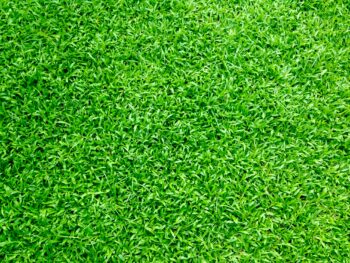
What is the purpose of top-dressing a lawn?
Top dressing a lawn serves several important purposes that contribute to your grass’s overall health. These purposes include:
Soil improvement: Top dressing adds organic matter and nutrients to the soil. Additionally, top dressing improves its structure, water retention, and fertility. This, in turn promotes healthy root growth and a more robust lawn.
Leveling uneven surfaces: Over time, lawns can develop low spots, bumps, and depressions. This is due to various factors such as settling, thatch buildup, or damage from heavy foot traffic. Top dressing helps to level out these uneven areas. Which in turn, creates a more uniform surface.
Thatch management: A thin layer of top dressing can help break down thatch. Thatch is the layer of dead grass and organic matter that accumulates between the soil and the grass blades. Excessive thatch can harbor pests and diseases. Furthermore, it prevents water, nutrients, and air from reaching the grassroots. Top dressing promotes the decomposition of thatch by introducing beneficial microorganisms.
Overseeding support: When combined with overseeding, top dressing can provide an ideal environment for new grass seeds to germinate and establish. The top dressing material helps to retain moisture, protect seeds from drying out, and improve seed-to-soil contact, thus enhancing germination rates and overall seedling success.
How to top dress a lawn
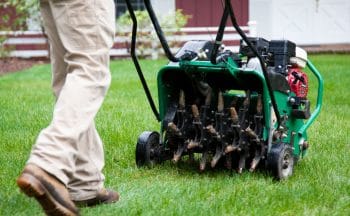
Top dressing a lawn involves several key steps that, when executed correctly, can significantly improve the health and appearance of your grass. Here’s a step-by-step guide to top-dressing your lawn:
Choose the right top dressing material: Select a high-quality top dressing mix appropriate for your lawn type and soil conditions. This mix typically includes a blend of sand, compost, and topsoil. The ratios of these components can vary depending on the specific needs of your lawn.
Mow and dethatch your lawn: Mow your lawn to a slightly lower height than usual. Remove any grass clippings. If you have a significant amount of thatch buildup, use a dethatching rake or machine to remove it. This will allow the top dressing material to penetrate the soil better.
Aerate the lawn (optional): If the lawn has compacted soil, aerate it before top dressing. This involves removing small plugs of soil to create holes that allow air, water, and nutrients to penetrate the root zone more effectively.
Prepare the top dressing mix: Measure the appropriate amount of top dressing material needed for your lawn size. Generally, 0.25 to 0.5 cubic yards per 1,000 square feet is recommended. Mix the materials thoroughly to ensure an even distribution of nutrients.
Apply the top dressing: Using a shovel, wheelbarrow, or top dressing machine, evenly distribute the top dressing mix across your lawn. Aim for a layer that is 1/4 to 1/2 inch thick.
Spread and level the top dressing: Use a rake, broom, or drag mat to spread and level the top dressing material. Ensure that it fills any low spots or uneven areas. Be careful not to smother the grass. The blades should still be visible after the top dressing is applied. The goal is to achieve even coverage and a smooth, uniform surface.
Water the lawn: After the top dressing material has been applied and leveled, gently water your lawn to help settle the material into the soil. Watering also encourages the breakdown of the organic matter in the mix, which releases nutrients to the grassroots.
Monitor and maintain: Keep an eye on your lawn’s progress in the days and weeks following the top dressing application. You may need to water the lawn more frequently for a short period to help the top dressing material integrate with the existing soil. Be prepared to mow the lawn more often since the added nutrients stimulate grass growth.
Should I mow before I top dress my lawn?
Yes, it is advisable to mow your lawn before top dressing it. Mowing your lawn to a slightly lower height than usual helps to achieve a more even application of the top dressing material and ensures that the grass blades aren’t smothered by the dressing.
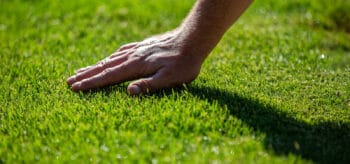
When should I top dress my lawn?
The best time to top dress your lawn depends on the type of grass you have and your local climate conditions.
Generally, you should top dress your lawn during its active growing season, allowing the grass to recover more quickly and take advantage of the added nutrients.
Here are some guidelines for when to top dress different types of lawns:
- Cool-season grasses (e.g., Kentucky bluegrass, perennial ryegrass, and fescues): These grasses thrive in cooler temperatures and peak in spring and fall. Top dress cool-season lawns in early spring or early fall when the grass is actively growing, and soil temperatures favor root growth.
- Warm-season grasses (e.g., Bermuda, St. Augustine, Zoysia, and centipede grass) grow best in warmer temperatures and peak in late spring and throughout summer. Top dress warm-season lawns in late spring or early summer when the grass has greened and is actively growing.
In general, avoid top dressing during extreme heat, drought, or other stressful conditions. The reason is that the added stress of top dressing can harm the grass.
What are the best top dressing materials?
The best top dressing materials for your lawn depending on your grass type, soil composition, and the objectives you want to achieve with top dressing. Some common materials used in top dressing mixes include:
- Sand: Sand is often used in top dressing mixes to improve soil drainage and level out uneven surfaces. A top dressing mix with a higher sand content will benefit lawns with heavy clay soil or drainage problems. However, avoid using sand alone, as it lacks organic matter and nutrients.
- Compost: Compost is an excellent source of organic matter and nutrients. It helps improve soil structure, fertility, and water retention. Using a high-quality, well-decomposed compost in your top dressing mix will promote healthy grass growth and improve soil health. Make sure the compost is free from weed seeds and any disease-causing organisms.
- Topsoil: Topsoil is often incorporated into top dressing mixes to add bulk and provide a base material compatible with your soil. Ensure that the topsoil you choose is free of contaminants, weed seeds, and heavy clay.
- Peat moss: Peat moss is added to top dressing mixes to improve water retention and soil structure. However, using peat moss sparingly and in combination with other materials is important. Excessive use contributes to environmental concerns and alters the soil pH.
Benefits of top dressing your lawn
Top dressing your lawn offers several benefits that contribute to a healthier, more attractive, and resilient turf. Some of the key benefits include:
Enhanced soil fertility: The organic matter in top dressing materials, such as compost, provides essential nutrients for your grass, improving overall soil fertility and supporting vigorous grass growth.
Better drainage and water retention: Adding sand and organic matter helps improve soil drainage in clay-heavy soils and increases water retention in sandy soils, resulting in a more balanced and healthy growing environment for your grass.
Drought resistance: Improved soil structure and water retention makes your lawn more resilient during drought. Which reduces the need for frequent watering and helps your grass withstand dry conditions more effectively.
Enhanced lawn appearance: Top dressing contributes to a greener, healthier, and more vibrant lawn. The added nutrients and improved soil conditions support robust grass growth. A level and even surface also enhances the overall aesthetic appeal of your lawn.
Reduced compaction: In conjunction with aeration, top dressing alleviates soil compaction, allows water, air, and nutrients to penetrate the root zone more effectively, leading to a healthier and more vigorous lawn.
Long-term lawn health: Regular top dressing, when combined with other essential lawn care practices like mowing, watering, and fertilizing, results in a thriving, beautiful lawn that will last for years to come.
Conclusion
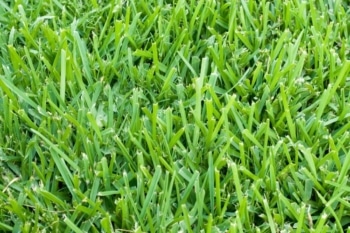
In conclusion, top dressing your lawn is an essential lawn care practice that offers numerous benefits for your grass’s health, appearance, and resilience.
By selecting the appropriate top dressing materials and applying them correctly during the optimal growing season, many good things will happen.
You will see improvement in the soil structure, fertility, and drainage of your lawn. Uneven surfaces will be leveled and new grass growth will be encouraged.

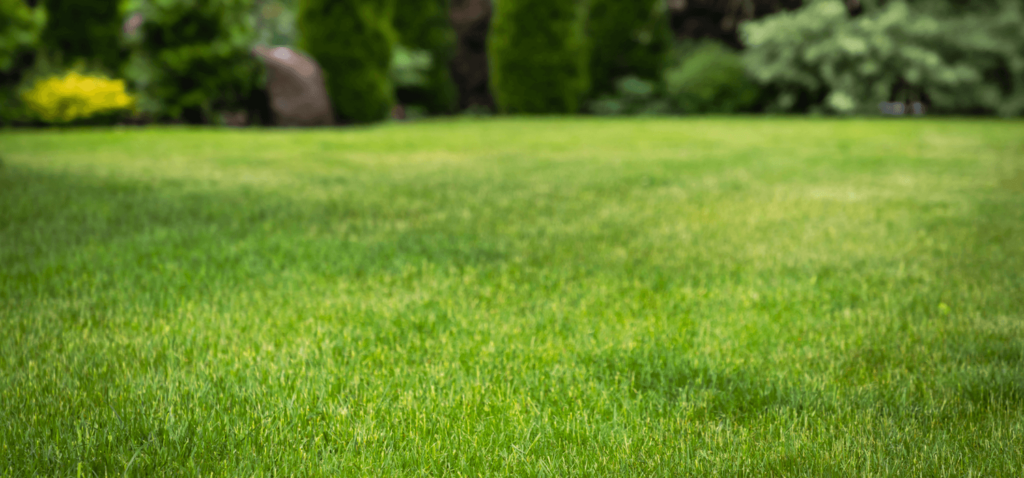

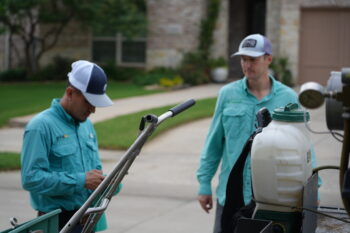
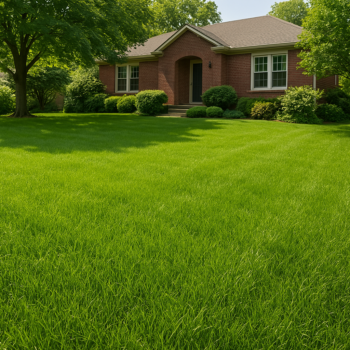
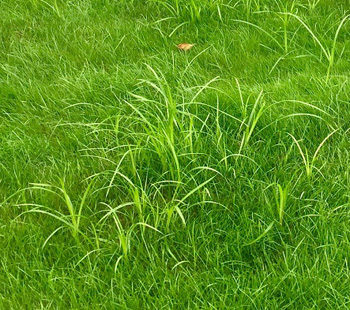
One Response
Thanks so much for your information as I’m trying to get a more beautiful lawn at my residence in zone 8a